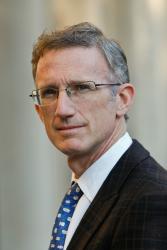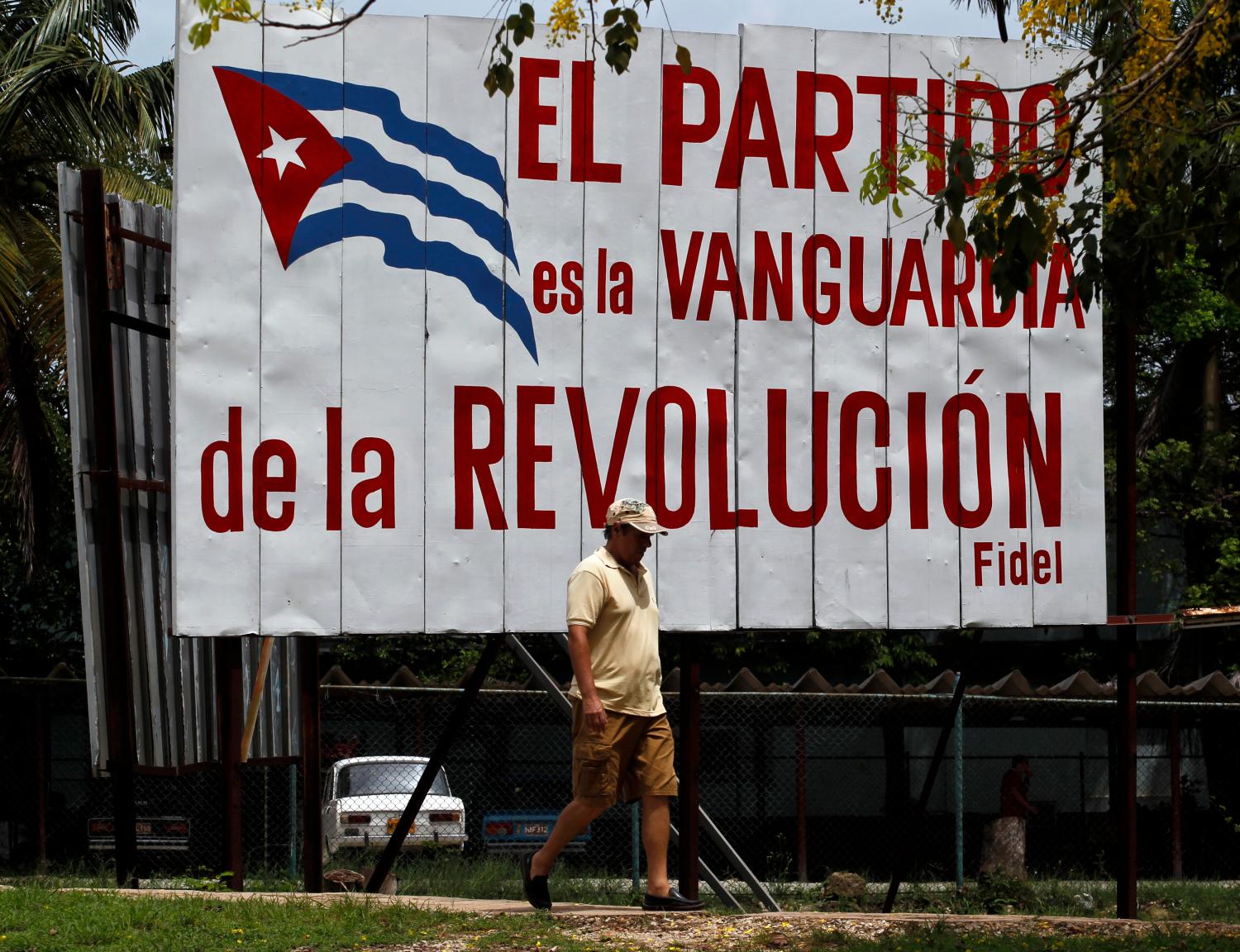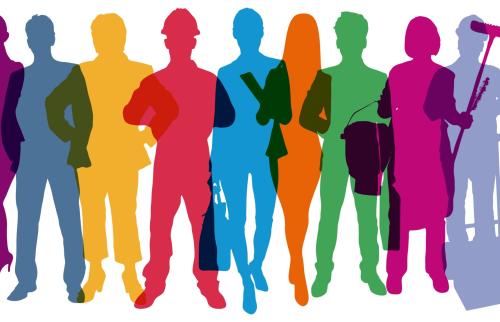On September 27, the Committees for the Defense of the Revolution (CDR), the local watchdogs of Cuba’s Communist Party, celebrated their 53rd anniversary with a series of street parties around the country. Neighbors danced around small bonfires and enjoyed potluck dinners into the late hours of the night, leaving Havana’s streets relatively deserted as I strolled downtown the following morning. President Raúl Castro and other party leaders marked the occasion by presiding over the CDR’s 8th Congress, where discussions about various problems, like the proliferation of illegal and “immoral” activities at the local level, were underway.

A sign proclaiming “Long live the CDR” hangs on the wall outside a local Committee for the Defense of the Revolution office the morning after street parties celebrating their 53rd anniversary. Photo credit: Ted Piccone
As I wandered the broken cobble-stoned corridors of Old Havana, I happened upon the Communist Party’s Museum of the CDR, its walls covered with homages to the heroes of the 1959 Revolution, framed greetings from the people of Vietnam and China and various replicas of the Cuban flag and other symbols of nationalist pride. As my guide at the CDR museum completed the tour, she quietly closed the door to the exhibit room, shyly asked for a small tip and then carefully hid the bill in a crumpled piece of paper.

Workers lay new pipe under Old Havana’s narrow cobble-stoned streets. Photo credit: Ted Piccone
Along the way, I had been approached by other friendly Cubans looking for a favor; one even suggested a trip to the grocery story to buy food for his child. My taxi driver was an aspiring lawyer who drove visitors around in an ailing Soviet-era Lada to earn hard currency on the side. A policeman chatted with fishermen along the famed Malecón as he watched two men in a small boat struggle for the day’s catch in front of a sign that said: no fishing boats allowed.
The problem of illegality in the Cuban economy is alive and well. In this regard, it is not unlike the rest of Latin America, where black markets flourish and up to 47 percent of its non-farm workers are in the informal economy. In Cuba, however, where the state has long prided itself on controlling all aspects of the political economy, the expansion of illegal and informal activities is something new again. Like in the days before the 1959 Revolution when corruption and organized crime flourished amidst high poverty and inequality, or the “special period” when the collapse of the Soviet Union led to a 33 precent contraction of Cuba’s GDP, most Cubans are struggling to survive. This time, they are also taking advantage of the gradual opening of the economy under Raúl Castro.
The “updating” of the socialist model, launched with some fanfare in 2011, is opening new opportunities for Cuban citizens to have some independence from the state. Under new regulations, small business enterprises and cooperatives, already covering nearly 450,000 workers, are set to expand to include such categories as real estate agents, construction workers and repair shops. Newly approved cooperatives in sectors such as construction, industry, transportation and restaurants will be able to use both national and convertible currencies, request bank loans and set prices according to market conditions.
The challenge for the current regime is to stimulate the economy through market-oriented reforms that also generate enough revenue to provide the high levels of health and education services that have distinguished Cuba from the rest of the region. It’s not clear if the changes implemented thus far are working – reliable data about the Cuban economy are notoriously difficult to obtain and often piecemeal. The proliferation of small businesses and family-run inns in Havana, fueled in part by a substantial rise in visitors and remittances from Cubans in the United States, is encouraging. On the other hand, compliance with tax regulations is uneven. According to the newspaper Granma, the Party’s organ, only 57 percent of individuals subject to a new transport tax on vehicle owners have paid it, even after an extension was granted. Even casual observation of the street economy tells us that tax evasion is probably widespread.
One of the core structural problems of the economy is the dual currency system in which most Cubans are paid in local pesos (CUPs) while foreigners and some sectors like tourism deal in convertible pesos (CUCs). The exchange rate of 24 CUPs to one CUC creates serious distortions throughout the economy and society. Professionally trained doctors, teachers and scientists, who must work for the state, earn about 20-30 CUCs a month, while a bartender or hotel maid can make the equivalent in a day. The result is brain drain, both internally as more highly skilled workers move to lower skilled jobs, and externally as people give up and leave the island for good. One public health expert told me that many Cuban health professionals on public duty missions in places like Brazil and Ecuador take up private practice on the side, earning enough to start a small business upon their return to Cuba or buy a house and live comfortable lives in their adopted countries.
One possible solution to the dual currency problem, according to international finance experts, is to unify the currency in one move, coupled with expanded subsidies and tax breaks and a healthy package of international financial assistance to cushion the blow. The 900 percent differential in the currencies’ values means that a “big bang” approach would inevitably generate serious winners (those in the hard currency economy) and losers (the majority of Cuban workers), a prospect any government would want to avoid if possible. A probable spike in inflation is also worrisome. The government appears to be taking a different approach by experimenting with a 10-1 exchange rate for certain state-owned enterprises like sugar, hotels and non-agricultural cooperatives.
We are witnessing today the unfolding of a transitional hybrid economy that has one foot on the accelerator and one foot on the brake. On one hand, a host of ongoing reforms in the domains of agriculture, tourism, property transfers, travel abroad and even sports are unshackling Cubans from a predominant state. President Obama’s decision in 2009 to relax U.S. travel and remittances rules has also helped give oxygen to the more liberal features of the reforms by providing seed money for new businesses and facilitating the flow of goods and capital from the Cuban diaspora in Florida. On the other hand, implementation of reforms is slow and often limited to pilot projects dispersed throughout the island. Rules for foreign investment are too restrictive and arbitrarily enforced and property rights remain in doubt.
Nonetheless, the package of changes underway in Cuba, under the auspices of Raúl Castro and other heroes of the Revolution, lends a certain political legitimacy to the project that could facilitate a soft landing for such a hard situation. As Richard Feinberg argues in a new Brookings report on the emerging middle classes due out this November, such a soft landing is already underway as small and medium enterprises and cooperatives gain traction. Castro’s announcement last year that his current five-year term will be his last, and the appointment of a much younger vice president to guide the party to the next phase of “prosperous socialism,” give Cubans I spoke to some hope that, in the next five years, Cuba will look even more different than it did five years ago.

A participant in a public forum on the national budget asks a question to a panel of government and academic experts in Havana. Photo credit: Ted Piccone
This shift is already visible. Open debates among Cuban citizens, including one I attended on the national budget process in a well-appointed theater organized by a leading public affairs magazine, are slowly underway. The Catholic Church is also playing an interesting role. The Conference of Catholic Bishops in Cuba recently released its first pastoral letter in 20 years endorsing the government’s economic liberalization and calling for a political opening that respects “the right to diversity with respect to thoughts, to creativity and to the search for truth.” Outspoken activists are touring European, Latin American and North American cities with their critiques of the current system and returning to the island determined to continue their campaign for greater freedoms, despite continued harassment and detentions. Change is in the tropical air.
As Cuba opens its economy to the world, and gradually finds the confidence to let Cubans be more open at home as well, the United States would be smart to move beyond the confines of its Cold War policy and let Americans see what they can do to support the Cuban people. President Obama can start by expanding the steps he took in his first term to facilitate greater trade, travel and communications with the Cuban people and budding small enterprises. He can also credibly remove Cuba from the list of state sponsors of terrorism, which is severely hampering a whole host of basic financial transactions for legitimate American travelers and businesses alike. It is time to exploit the opportunity offered by Cuba’s economic reforms and let reconciliation – both within the island and across the Florida Straits – begin.




